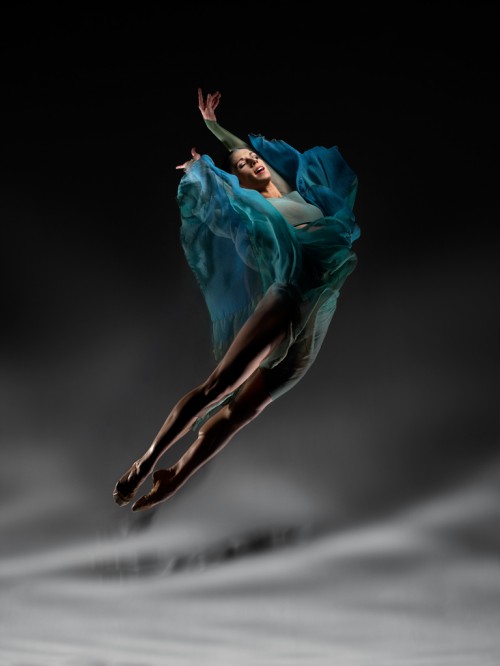Guest reviewer Alison Neale (@AlisonNeale) goes to her first production at Northern Ballet … think her title says it all really …
ONDINE: FALLING IN LOVE WITH BALLET AGAIN
The sea moves in its endless dance and playfully tosses a sea sprite. The waves whisper “seek out a soul, child, by fleeing to mankind but beware of what may happen” and toss her gently upon the shore.
(From the programme to Ondine)
I’m accustomed to seeing ballet from high up in the gods, usually peering round a pillar or through a pair of binoculars (these being the only tickets at Covent Garden’s Royal Opera House that don’t require me to take out a small mortgage), so the first thing that struck me about this production was how amazing it was to be close enough to the dancers to see how much effort they were putting into every move, every gesture. The audience’s proximity, then, makes it all the more impressive that Ondine (danced by Martha Leebolt) managed to make her movements so weightless and ethereal, while the Sea Maidens really did seem to float across the stage.
This was my first experience of Northern Ballet. I should have gone long ago, but I had something of ballet fatigue … I was a bit sick of tutus, princesses and everyone living happily ever after. Ondine was definitely the cure. It might be classical ballet, but it sure isn’t a traditional production. Ondine is described in the programme as ‘an adult fairy tale’, but given that the story involves two girls after the same guy, you can pretty much guarantee that some sad soul isn’t going to get a happy ending!
I’m not going to give away the storyline, though, because although it is usually useful to read it beforehand for a ballet, I felt that the dancers all expressed their emotions so clearly that no prompt was needed here. The dances between Ondine, the Chevalier Brand (Tobias Batley) and Beatrice (Dreda Blow) in Act 2 were superb. In a tale such as this, the easy way out would have been to have a ‘baddie’, but I could sympathise with all three characters and particularly in those scenes I felt their anguish over an impossible situation.
The music blended unearthly tones, orchestral extravaganza and something akin to a 1920s musical, although it took me a little while to warm to the disconnection between music and movement in the first act. The dancing was surprisingly varied, too, between ballet and contemporary (and probably other styles I just don’t recognise). The programme says of Ondine that ‘the alien quality of her movement transfixes’ Brand, and I cannot put it any more succinctly. I gasped at some truly spectacular lifts: I swear that Brand lifted Ondine with just one finger at one point and he threw both girls around with great abandon.
There were some nifty set changes at sea, and the scenery was simple and effective throughout, brought to life by the projections and lighting effects. The production also gets top points from me for appropriate use of floaty material.
Overall, I enjoyed this production. It was clever, but subtle, and I know that if I sat through it again I would enjoy it just as much, and notice little things I missed the first time round – the repeated motifs in the dancing or the emotions being expressed by characters in the background, for example. Sadly I have just the one set of eyes.
Favourite bit: so many to choose from, but the sea scene in Act 2 blew me away.
Biggest shock: a sex scene in a ballet! Whatever next?
My only disappointment: I expected more of the Priest, with the coolest costume and Ming-the-Merciless beard – a dance with sabres or something. This was a lost opportunity in my book.
Ondine
On at the West Yorkshire Playhouse (Quarry Theatre) until 15 September
Director and Choreographer: David Nixon; Music: Hans Werner Henze; Design and Costume: Jérôme Kaplan; Lighting Design: Olivier Oudiou; Projection Design: Tanguy Alanou.
